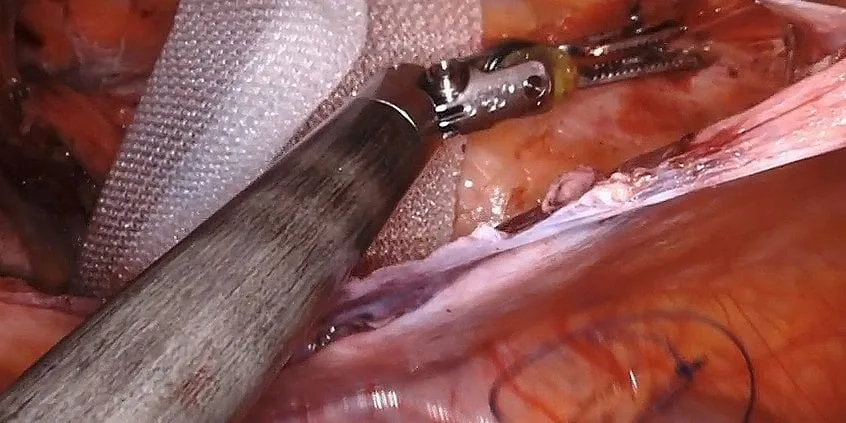Robotic Inguinal Hernia Surgery
An inguinal hernia occurs when the intestines or abdominal tissues protrude through a weak spot in the abdominal muscles. This condition can cause pain, especially during activities like coughing, lifting heavy objects, or straining.
Diagnosis of Inguinal Hernia
Inguinal hernias are typically diagnosed through a physical examination. The doctor checks for swelling or a bulge in the groin area. A urine test may also be performed to rule out other conditions that can cause similar pain, such as urinary tract infections or kidney stones.
How Is It Treated?
Surgical intervention is the most common treatment for inguinal hernias. Since hernias can progress and lead to more discomfort or complications, surgery is usually recommended. Hernia repair can be performed using either an open or laparoscopic (minimally invasive) method.
The treatment method is chosen based on the patient’s overall health, the size of the hernia, and the severity of symptoms.

Diagnosis and Treatment Methods of Inguinal Hernia
Inguinal hernias are typically diagnosed through a physical examination. The doctor checks for swelling in the groin area. A urine test may also be performed to rule out other conditions that present with similar symptoms, such as urinary tract infections or kidney stones.
To exclude other conditions that mimic hernia symptoms, imaging techniques like ultrasound, MRI, or CT scans can be used. If the hernia does not negatively affect the patient’s daily life, surgical intervention may not be necessary. However, in cases where the hernia reduces quality of life or poses a risk of complications, surgical repair is recommended. Inguinal hernia surgery is a commonly performed procedure.
Treatment Methods
Robotic Surgery (Robot-Assisted Minimally Invasive Surgery)
In robotic surgery, the operation is performed by the surgeon with the guidance of a high-resolution, 3D robotic system. The procedure is carried out through several small incisions in the abdominal area. The surgeon’s hand movements are transmitted with high precision to the surgical site via special robotic instruments. Thanks to the small incisions, patients tend to recover more quickly and return to daily activities sooner.
Open Surgery
In this method, an incision is made in the groin area under local or general anesthesia. The herniated tissue is pushed back into the abdominal cavity, and the weakened muscle wall is reinforced with sutures before the incision is closed. Compared to other methods, recovery time after open surgery may be longer.
Laparoscopic Surgery (Minimally Invasive Surgery)
Laparoscopic surgery is performed through a few small incisions in the abdominal area. During the operation, gas is introduced into the abdomen to expand the surgical area and improve visibility. A small camera is inserted through one of the incisions, allowing the surgeon to clearly see the surgical site. This method offers less tissue damage and a quicker recovery, enabling patients to return to daily life more rapidly.
TREATMENTS

